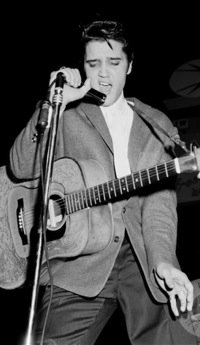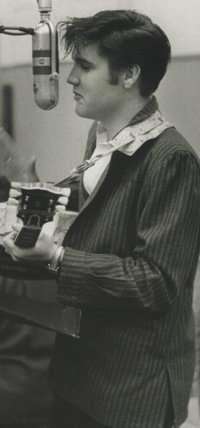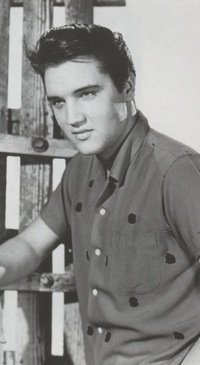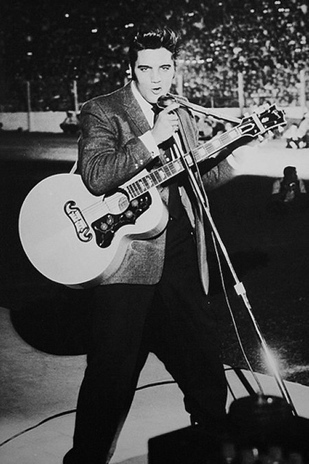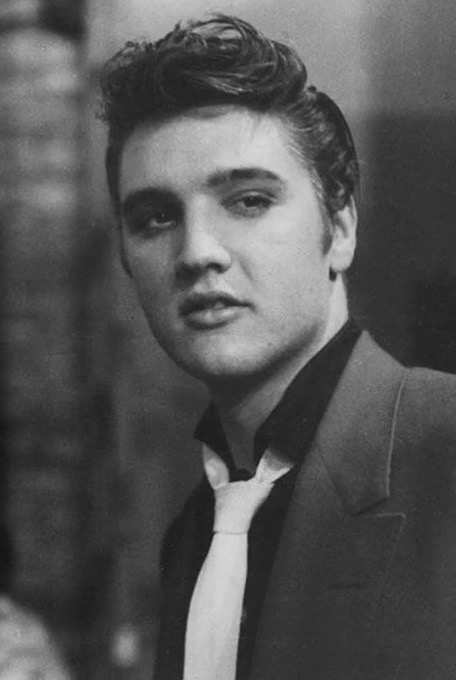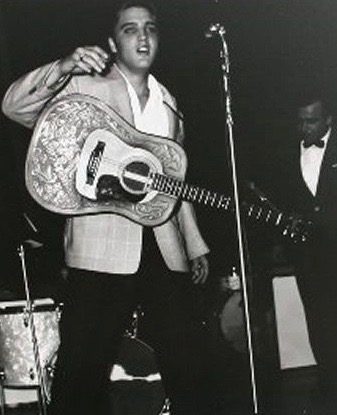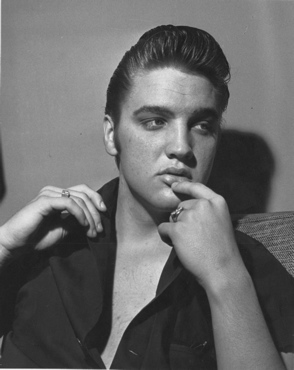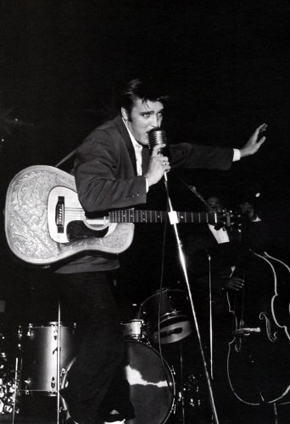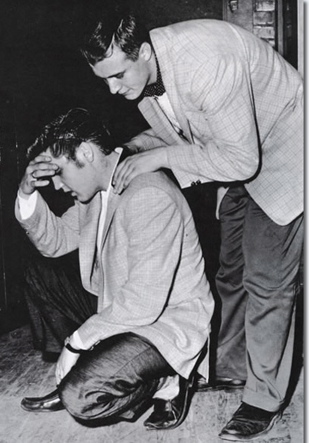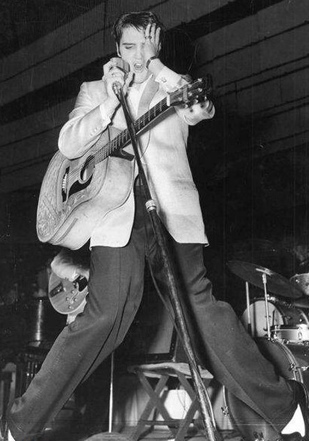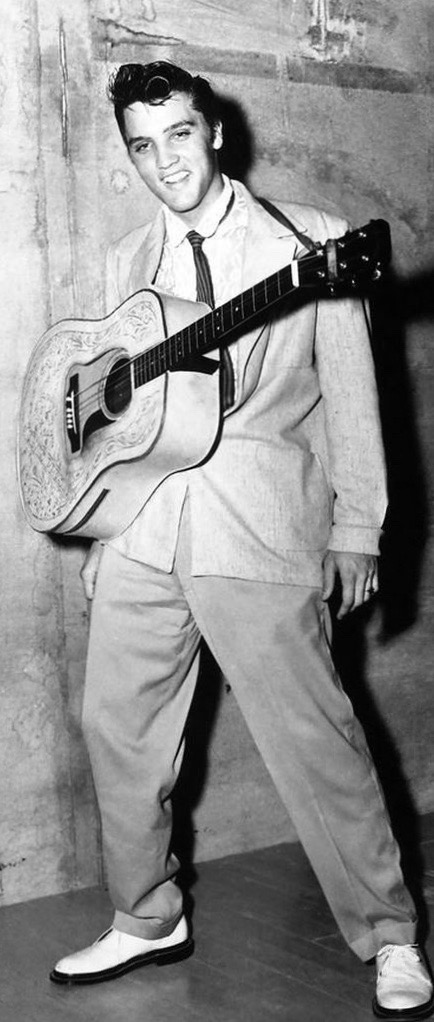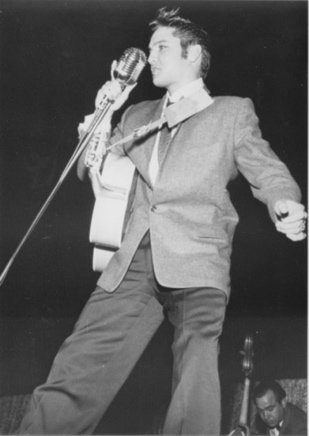Elvis History Blog
The New York Post—October 4, 1956
"Elvis and the Big Beat"
Analyzing the Elvis Presley Craze in 1956
When I became an Elvis Presley fan at the age of 13 in 1962, I didn’t know or care about all the controversy surrounding Elvis in the fifties. I admired the famous pop singer and musical movie star that he was in the early sixties. It wasn’t until a decade ago, when I began doing research for my “Elvis ’57: The Final Fifties Tours” book, that I became fascinated with the period when Elvis first burst onto the national scene.
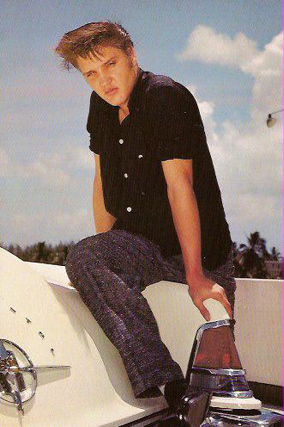
In 1956 and 1957, thousands of articles about Elvis appeared in newspapers and magazines around the country, as journalists and pundits sought to make sense of Presley and his influence on American culture. Perhaps best known are the columnists who crusaded against what they considered Elvis’s assault on the sexual morals of the nation’s youth. More interesting, though, were the in depth serial articles about Elvis that appeared in some major publications in the fifties. Some examples are TV Guide’s 3-part serial (September 8-29, 1956), The New York Mirror’s 8-part expose (September 23-30, 1956), The San Francisco News’s 3-part serial (October 15-17, 1956), and The Chicago American’s 6-part series (March 17-22, 1957).
One of the more interesting article runs at that time was “The Rock and Roll Story,” a 12-part series that ran in the New York Post from October 1-14, 1956. The first four articles in that series concentrated on Elvis, with the remaining eight articles focusing on rock ’n’ roll in general. The fourth article in the series, which appeared in the Post on October 4, 1956, was particularly revealing about the Elvis debate going on that year.
Written by Charles Gruenberg and titled, “Elvis and the Big Beat,” the article attempted to analyze, from several viewpoints, the Presley craze that was then at its height. The author began with a personal opinion about Presley’s talent—or rather, the lack of it. “If Elvis Presley had a more placid temperament, the chances are that today he’d be just another of the countless Rock and Roll singers making records for little-known labels and touring the South in endless one-nighters.” Gruenberg felt Elvis’s singing style was not the sourse of his popularity; “it was the visual Presley, with his wild body movements while singing, that brought him fame.” He quoted Sun Record president Sam Philips to support his claim.
“The thing that sold Presley was that he is more personable off the record than on—which is just the reverse of most singers … He is not like any artist in the world. He has sex personality. His appeal is mainly physical and it would be a mistake to clean up his act … Presley is fantastically fantastic.”
Gruenberg then made a claim that history has since validated, that being that it was Elvis’ TV appearances in 1956 that made his name a household item. He correctly cited the press response to Presley’s onstage antics on The Milton Berle Show four months earlier as the beginning of widespread criticism of Elvis. He disagreed, though, that Presley’s act included the bumps and grinds used in burlesque shows. “He does move his legs in time to the music, and he does throw his hips forward and his shoulders back while strumming his guitar. The result, while something that would get a burlesque queen laughed off the stage, is still definitely sex-laden.”
He gave Presley an opportunity to defend himself against the claim that he tries to sexy.
“My mammy wouldn’t want me to. I’m not trying to be vulgar, not trying to stimulate sex. I just do a lot of wiggling and quivering, but I never do a bump or grind. I can’t sit stiff when I sing, that’s all.”
(Elvis using the term “mammy” in reference to his mother is so odd that it casts doubt on the whole statement above. Unfortunately, Gruenberg provided no source for this quotation, as well as not for many other direct quotations he used in this and other articles in the series.)
• “He’s the dreamiest thing,” said Memphis girl
Gruenberg apparently never sat through a Presley stage show, but he said a Memphis reporter who did, shared his observations of how some girls in the audience responded.
“A girl about 14 screamed as if she’d been suddenly scalded. A second teenager sitting next to her was making weird guttural whines. Another girl was scratching her arm with her fingernails, leaving long red welts. After the show, I heard one girl tell another, ‘I grabbed his hand and he grinned and said, ‘Cut me loose?’ So I cut him loose. It was heavenly. He’s the dreamiest thing I ever laid my eyes on.’”
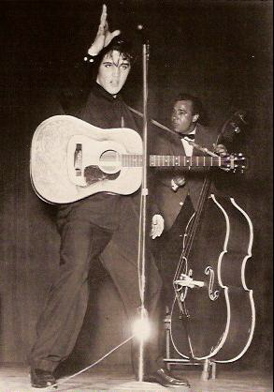
Teenage girls who didn’t get a chance to see Elvis on stage found other ways of responding to Elvis’ sex appeal, the author noted. As an example, he described a large sidewalk display of Presley pictures outside a Times Square novelty store. The manager explained, “About every half hour we have to go outside to the display to wipe off the lipstick from the kids who just walk up and give Elvis a buss.”
• Everybody had an opinion about Elvis
In what Gruenberg labeled the “ultimate in inanity in the Presley craze,” an Arizona art professor described Elvis as having a strong resemblance to a Greek god. The professor said, “I rather imagine there were probably lots of Greek maidens screaming at the actors and singers playing the role of Apollo, just as our youngsters do at Presley.”
Giving equal time to the other side, the author quoted George Avakian, a jazz writer and executive of Columbia Records. “There’s something sick here,” he said. “Presley has picked up the Marlon Brando and Actors’ Studio James Dean bits with dirty sex thrown in.”
Less extreme about the sex angle were the clinical comments of psychiatrist Dr. David Abrahamsen.
“The music played by a band leads the youngster to want to dance. The reaction to Presley is different. It’s a visual thing, and I’m afraid it is the suppressed desire for that strong biological urge that creates his following … Presley no doubt symbolizes a great desire in the realm of this biological urge—sex, if you like.”
Hollywood columnist Joe Hyams recalled Presley’s response to such diagnoses by psychiatrists. “They all think I’m a sex maniac. They’re just frustrated old types anyway—I’m just natural.”
• Elvis’ sex life examined
Gruenberg then tried to pry into Presley’s personal life to discover the true extent of the singer’s sexual appetite. The author could find nothing unseemly in Elvis’ public contact with women. “While he was in Hollywood,” the author admitted, “Presley was pretty much under wraps, and the only dates he had that anyone would talk about were with the former Mrs. Judy Spreckels and with actress Natalie Wood. And these appeared to be well-chaperoned.”
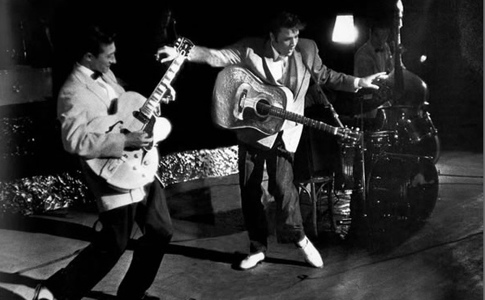
However, according to a Presley friend, Gruenberg said, Elvis had a “fair share of unpublicized dates” in Hollywood. Colonel Parker also spoke on the subject, no doubt with commercial motives foremost in mind.
“Well, he is a great favorite with girls, but he couldn’t chase them all—there are too many of them. I don’t know of any case where Elvis chases the girls any more than any normal American boy, with the exception that instead of having to look for dates there are always lots of fans in the theater.”
Toward the end of his article, Gruenberg engaged in some dubious speculation about Presley’s sexual activity. Without naming a source, he claimed that when Elvis first came to New York to record for RCA Victor, “one of the major jobs of the company’s publicity staff was to break him of the habit of boasting about his conquests.” He went on to say that by the spring of 1956, Elvis was only “partially cured” of that habit, and that when a Post reporter asked him if he had any thoughts of marriage, Presley responded, “Why buy a cow when you can get milk through the fence?” Such a crude comment, if Elvis indeed said it, would have been very unusual, considering how guarded he was with the press, even in those early days of his exploding fame.
• Elvis’ fans defended him
As to be expected, on October 8, 1956, four days after the Gruenberg article appeared in the Post, letters defending Elvis appeared in the newspaper’s “Dear Editor” column. A “Miss Tinkle” obviously was offended by the “fence” quote.
“I would like to request that you stop using such vulgar and disgusting language in describing such a great and talented star as Elvis Presley. I think it is utterly revolting the way you call him such viciously untrue names. I know there are quite a few older people who dislike him, but printing such trash for people who don’t know him to read should be prohibited by law. I, for one, happen to believe him to be one of the most talented show personalities that has come along for many, many years. If your paper continues to do this, I think some action should be taken to stop it. I would like very much for you to prove that there is a grain of truth in these statements. I would like you to know that I, and many other younger people will discontinue purchasing The Post. I HOPE THAT YOU WILL TAKE MY ADVICE.”
Several other articles about Elvis Presley are included in the 12-part series on rock ’n’ roll that appeared in The New York Post in October 1956. It’s not unusual that some fallacies and misinterpretations found their way into press reports back then. Elvis was a hot commodity at the time, and publications were feeling the pressure to cover him. Rumors floated by shady sources were not verified at times in the rush to print Presley articles. Over half a century later, the mix of facts, falsehoods, speculation, fear, and devotion that marked Presley’s press coverage in the fifties still makes for interesting reading. — Alan Hanson | © November 2017
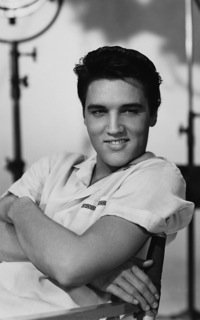
“The thing that sold Presley was that he is more personable off the record than on—which is just the reverse of most singers … He has sex personality. His appeal is mainly physical and it would be a mistake to clean up his act.”
